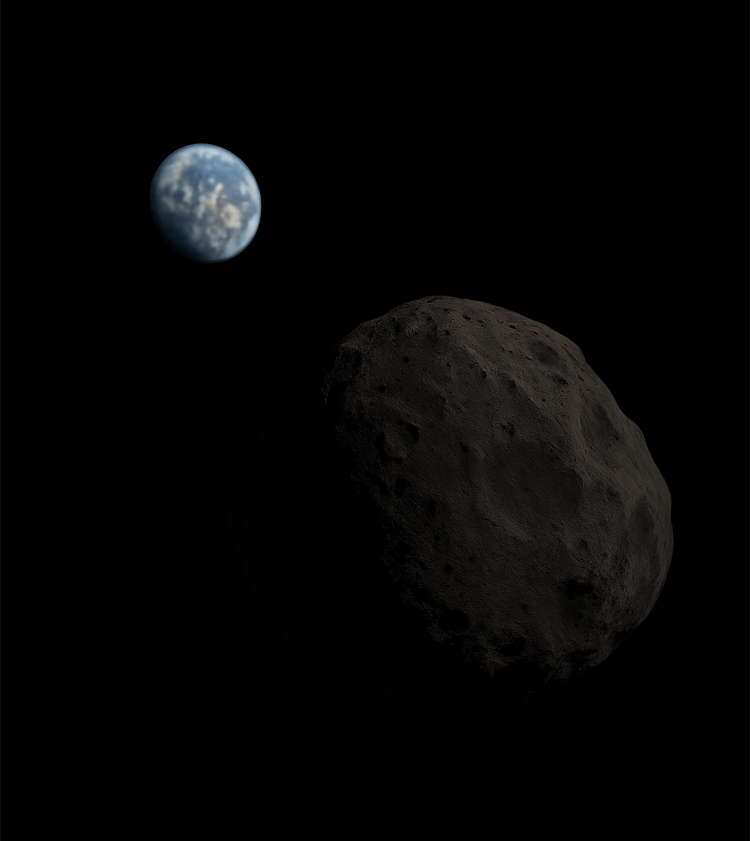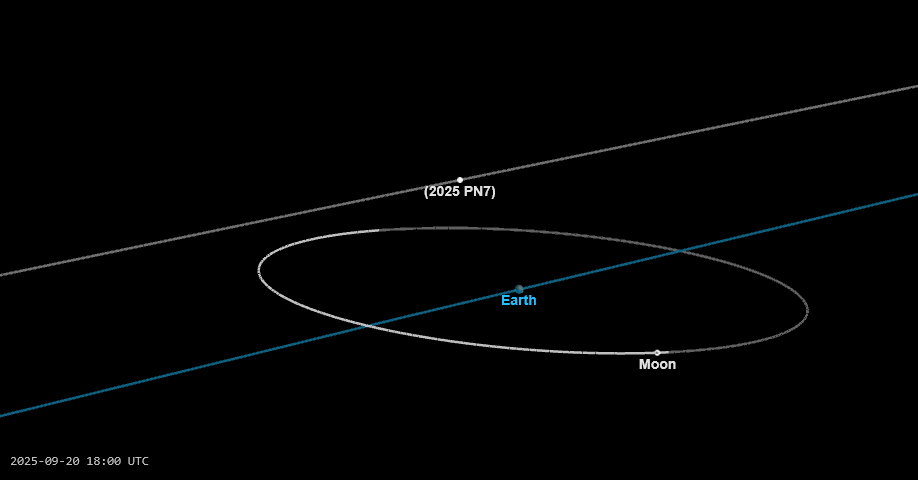
20th September 2025 New "quasi-moon" of Earth discovered Astronomers have identified a new, tiny companion to Earth called 2025 PN7. It moves in step with our orbit and looks set to linger nearby for around 60 years.
A faint asteroid about 19 metres across has joined the shortlist of objects classed as Earth's quasi-moons. Designated 2025 PN7, it traces an oscillating path that keeps it loosely in step with our planet, appearing to loop around us while the Sun remains its primary anchor. Early analyses indicate it has shadowed Earth for decades and should remain in this configuration until 2084, before drifting further away as gravitational tugs reshape its orbit. Pan-STARRS observations in late August flagged the object, after which independent orbit modellers traced its curious dance and suggested quasi-satellite status. Based near the summit of Haleakalā on the island of Maui in Hawaii, Pan-STARRS uses 1.8-metre telescopes featuring one of the world's largest digital cameras, containing up to 1.5 billion pixels each (second only to the Vera C. Rubin Observatory, which has 3.2 billion). This extraordinary power allows astronomers to sweep vast areas of sky with incredible sensitivity. Even so, 2025 PN7 has only just revealed itself. At magnitude 26, it appears incredibly dim – more than a hundred million times fainter than the limit of unaided human vision and far beyond the reach of amateur telescopes. The researchers, writing in Research Notes of the American Astronomical Society, describe it as one of the smallest and least stable of Earth's quasi-moon family, which has a growing tally of confirmed members, now numbering at least seven.
Quasi-moons look like natural satellites, yet are never fully under Earth's control. The Sun remains the primary anchor, while Earth's gravity gently corrals them into looping tracks that can persist for years or decades. We have seen this behaviour before. Kamoʻoalewa (2016 HO3) has held a long-lived quasi-satellite relationship with Earth, expected to last for about 381 years in total, and serves as a benchmark for this class. China's Tianwen-2 probe – launched in May 2025 – is on course to visit Kamoʻoalewa, collect about 100 g (3.5 oz) of surface material, and return the sample to Earth in November 2027. By contrast, 2025 PN7 seems more transient and delicate, which makes it scientifically enticing. Short-lived companions let planetary scientists test how resonances switch on and off, how tiny nudges accumulate, and how often small bodies wander into our neighbourhood. Some media outlets have suggested that, unlike Kamoʻoalewa (which may be lunar ejecta), PN7 might originate from the main asteroid belt. However, astronomers have yet to publish definitive evidence for that hypothesis. Its discovery also invites comparison with last year's "mini-moon" 2024 PT5, a different phenomenon. PT5 became briefly bound to Earth and completed a temporary loop for two months before departing to resume a solar orbit, with a return expected in 2055. PN7 fails to cross that threshold into true capture, yet it will linger far longer in our sky's slow-motion geometry. Together, these cases reveal the contrasting ways small bodies can pass through Earth's neighbourhood. Dr. Teddy Kareta, assistant professor in the Department of Astrophysics and Planetary Science at Villanova University, Pennsylvania, did not contribute to the discovery of PN7, but told CNN: "Based on what little we know so far, it's almost certainly a rocky and natural object. Sometimes, old satellites and rocket junk end up in these very-near-Earth kinds of orbits, but we can often tell 'natural' (e.g., asteroidal) from 'artificial' (e.g., satellite) based on how their orbits evolve on short timescales." As survey power grows, especially with next-generation facilities, more objects like 2025 PN7 will likely emerge. Each can help refine models of near-Earth debris and improve our picture of how the planet shares its orbital lane with small, elusive worlds. These could be accessible targets for future spacecraft missions, potentially including studies of planetary defence, asteroid mining, and Solar System formation.
Comments »
If you enjoyed this article, please consider sharing it:
|
||||||








